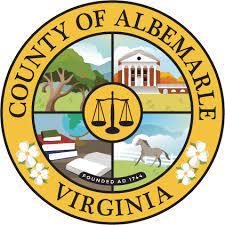The Thomas Jefferson Planning District Commission continues work on a document that’s intended to coordinate regional responses to natural disasters and other calamities. Ian Baxter of the TJPDC presented to the Louisa Board of Supervisors last week. (read the draft plan)
“So the plan itself is essentially to prepare for natural disasters,” Baxter said. “We’re lookint to reduce loss of life, property damage, and disruption of commerce. I think I should reiterate before I get into the weeds, so we’re serving the six localities that comprise the Planning District.”
Baxter initially said such plans were required by the Federal Emergency Management Agency as a condition of eligibility for some of its grant programs, but he would later clarify that information after the meeting. More on that below.
Baxter said the plan is based on an analysis of the most likely disasters. The categories of Hurricanes/highwind/windstorms, flooding, and winter storms all rank as the highest probabilities for this region.
Before Baxter’s presentation, several members of the public complained about a flooding problem in the town of Louisa. One Supervisors noted there were specific mitigations for each locality, but wondered how that might apply to an ongoing situation.
“What does this document do for us?” asked Supervisor R.T. “Toni” Williams o
“That’s a great question,” Baxter said. “The action items sort of serve as a base for what localities might engage in. These are aspirational. They’re not tied to implementing all of these mitigation action items. What it does for you is give you a good blueprint for what you can hope to accomplish over the next five years.”
Baxter said having the plan in place would allow federal funding to flow after a disaster. Williams was skeptical of this approach.
“It gives us access to funding after said disasters happen,” Williams said. “Because we have a mitigation plan. Just because we have one. We don’t have to do anything with it. It just sat on the shelf and because we spent money creating a plan, that gives us access to mitigation funds after a disaster happens. That just seems totally backwards to me.”
Williams said he was not interested in what plans are for other communities in the area, but wanted to know what it could do for Louisa.

Supervisor Bill Adams said he was concerned about data from the National Climate Data Center on page H-14 that summarizes the number of floods since 2010 and the amount of damages reported. Albemarle reported $50,000 whereas Greene reported $4.777 million.
“And most other counties didn’t report anything,” Adams said. “We just heard people here talking about…. Mrs. Woolfork was talking about the $25,000 to their driveway, I’ve been to their house, I know their driveway, and I know the culverts they’re talking about replacing. It says here this data came from the National Climate Data Center. Obviously it’s not complete. Where do they get their data?”
Baxter said he did not know where the data came from, but that the TJPDC relies on the data coming from the federal government.
Williams said he wanted a work group to be convened of Louisa officials including town officials to see if they can mitigate flooding on a specific portion of Beaver Creek.
“In my mind that would be money well spent with the TJPDC,” Williams said.
The working group will be formed and the draft plan will return to the Board.
The next day, Baxter sent an email sent to Louisa Supervisors after the meeting to clarify something in his presentation.
“I misspoke when I described what the hazard mitigation plan provides eligibility for in terms of mitigation grants. In fact, a variety of pre-disaster grants are open to localities that adopt a Hazard Mitigation Plan, and most post-disaster eligibility is not contingent on the adoption of a plan (so, the County would still be eligible for disaster relief even without an adopted plan). Please see the chart below:”

Thanks to Tammy Purcell of Engage Louisa for her help with a fact-check in this story.
Before you go: The time to write and research of this article is covered by paid subscribers to Charlottesville Community Engagement. In fact, this particular installment comes from the July 11, 2022 edition of the program. To ensure this research can be sustained, please consider becoming a paid subscriber or contributing monthly through Patreon.













